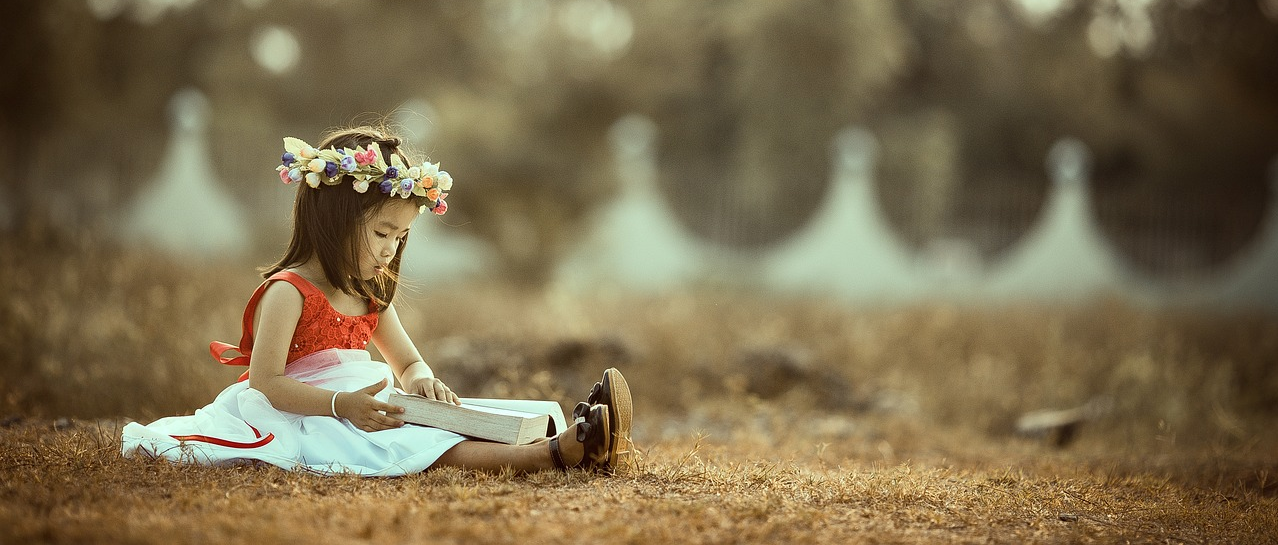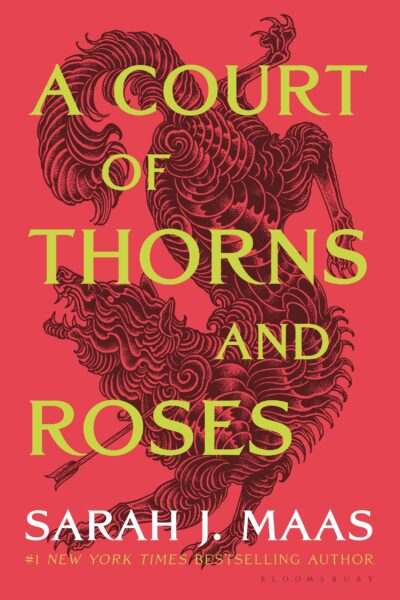A Court of Thorns and Roses
Chapter 15
by Maas, Sarah J.The chapter opens with a tense confrontation between the protagonist and four naga—nightmarish, serpentine creatures with humanoid features and deadly talons. These beings, known for tormenting mortals, fixate on both the protagonist and the captured Suriel, viewing them as prey. As the naga taunt and advance, the protagonist calculates her limited options, armed with only a bow and nine arrows. The scene crackles with danger as she backs away, her trembling arm drawing the bowstring while the creatures savor the anticipation of the hunt.
In a split-second decision, the protagonist screams to distract the naga and fires an arrow to free the Suriel. The creature escapes in a blur, momentarily disorienting the attackers. Seizing the opportunity, the protagonist shoots one naga, causing blood to spray, but the remaining three quickly refocus on her. She flees toward the stream, hoping to reach Lucien, though uncertainty lingers about whether he’ll aid her. The naga give chase, their snarls and crashing footsteps closing in as she navigates the treacherous forest terrain.
Cornered and outnumbered, the protagonist fights desperately, using her bow as a makeshift weapon and managing to incapacitate one naga with a crushing blow. However, the others surround her, mocking her defiance. When they snap her bow and pin her to the ground, the situation seems hopeless. Yet, driven by rage and terror, she stabs one naga with a hidden knife, momentarily turning the tide. Bloodied but unbroken, she continues to resist, even as the remaining attackers overwhelm her.
The chapter climaxes with the protagonist’s brutal struggle for survival. Despite her injuries and the naga’s taunts about her impending mutilation, she refuses to submit. The narrative underscores her resilience as she wields Lucien’s knife, determined to fight until the end. The unresolved tension leaves readers on edge, wondering whether she will escape or succumb to the creatures’ savagery, setting the stage for the next chapter’s developments.
FAQs
1. How does the protagonist’s decision to free the Suriel demonstrate her moral complexity in this chapter?
Answer:
The protagonist’s choice to free the Suriel instead of focusing solely on her own survival reveals her nuanced morality. Despite initially hunting the Suriel and facing imminent danger from the naga, she risks her safety to sever its tether, showing compassion for a creature she once viewed as prey. This act contrasts with her earlier willingness to kill the Suriel in the snowy woods, illustrating her capacity for empathy even in life-threatening situations. The chapter highlights this tension between self-preservation and ethical action when she screams to distract the naga, deliberately drawing their attention to execute her rescue plan (pages 131-132).2. Analyze the significance of the broken bow as a symbolic moment in the confrontation with the naga.
Answer:
The snapping of the protagonist’s bow represents both the collapse of her primary defense and a pivotal shift to raw survival instinct. Earlier, she relies on calculated archery (firing at the snare and naga), but when the bow shatters, she must adapt with close-combat weapons and physical resilience. This mirrors her broader journey—transitioning from structured human tactics to embracing primal, improvisational strategies in Prythian. The moment underscores her vulnerability while also showcasing her grit, as she immediately resorts to Lucien’s knife (page 134), symbolizing resourcefulness when traditional methods fail.3. How does the chapter’s depiction of the naga enhance the thematic tension between humans and faeries?
Answer:
The naga embody the predatory horror of Prythian’s faeries, emphasizing the brutal power imbalance between humans and Fae. Their taunts (“scrawny human thing”) and graphic threats to skin and dismember the protagonist (page 134) reinforce the dehumanization of mortals in their world. Yet the protagonist’s defiance—both verbal (“Go to Hell”) and physical (stabbing one naga)—challenges this hierarchy. The encounter crystallizes the book’s broader theme: humans must navigate a realm where they are both prey and unexpected agents of resistance, with the naga serving as a visceral reminder of the stakes.4. Evaluate the protagonist’s survival tactics during the chase sequence. What strengths and limitations do they reveal?
Answer:
Her tactics showcase strategic foresight but also physical limitations. She initially plans escape routes (retreating toward the stream, calculating paths) and uses terrain to her advantage (leaping over water, page 133). However, the naga’s superior speed and numbers overwhelm her. Her strengths lie in adaptability—switching from bow to knife—and leveraging surprise (freeing the Suriel). Key limitations include human fragility (gasping breaths, page 132) and reliance on tools that can fail. The sequence highlights her growing competence in Prythian while underscoring the dire consequences of small miscalculations in this hostile world.
Quotes
1. “The naga were sprung from a nightmare. Covered in dark scales and nothing more, they were a horrendous combination of serpentine features and male humanoid bodies whose powerful arms ended in polished black, flesh-shredding talons.”
This vivid description introduces the terrifying antagonists of the chapter, establishing the visceral threat they pose and the nightmarish quality of Prythian’s creatures. It sets the tone for the brutal confrontation to come.
2. “I had three heartbeats to make up my mind. Three heartbeats to execute my plan.”
This quote captures the protagonist’s razor-sharp focus and life-or-death decision point, emphasizing both the urgency of her situation and her calculated bravery. The rhythmic phrasing mirrors the tension of the moment.
3. “I wouldn’t go down without a fight, without taking some of them with me. ‘Go to Hell,’ I said, but it came out in a gasp.”
This moment showcases the protagonist’s defiant spirit even when overpowered, revealing her core character trait of resilience. The contrast between her fierce determination and physical limitation makes the scene particularly poignant.
4. “A white-hot flame went through me. Rage or terror or wild instinct, I don’t know. I didn’t think. I grabbed the knife in my boot and slammed it into his leathery neck.”
This climactic moment demonstrates the protagonist’s transition from prey to fighter, capturing the raw, instinctual survival response that defines her character development in this brutal encounter.
Quotes
1. “The naga were sprung from a nightmare. Covered in dark scales and nothing more, they were a horrendous combination of serpentine features and male humanoid bodies whose powerful arms ended in polished black, flesh-shredding talons.”
This vivid description introduces the terrifying antagonists of the chapter, establishing the visceral threat they pose and the nightmarish quality of Prythian’s creatures. It sets the tone for the brutal confrontation to come.
2. “I had three heartbeats to make up my mind. Three heartbeats to execute my plan.”
This quote captures the protagonist’s razor-sharp focus and life-or-death decision point, emphasizing both the urgency of her situation and her calculated bravery. The rhythmic phrasing mirrors the tension of the moment.
3. “I wouldn’t go down without a fight, without taking some of them with me. ‘Go to Hell,’ I said, but it came out in a gasp.”
This moment showcases the protagonist’s defiant spirit even when overpowered, revealing her core character trait of resilience. The contrast between her fierce determination and physical limitation makes the scene particularly poignant.
4. “A white-hot flame went through me. Rage or terror or wild instinct, I don’t know. I didn’t think. I grabbed the knife in my boot and slammed it into his leathery neck.”
This climactic moment demonstrates the protagonist’s transition from prey to fighter, capturing the raw, instinctual survival response that defines her character development in this brutal encounter.
— Unknown
FAQs
1. How does the protagonist’s decision to free the Suriel demonstrate her moral complexity in this chapter?
Answer:
The protagonist’s choice to free the Suriel instead of focusing solely on her own survival reveals her nuanced morality. Despite initially hunting the Suriel and facing imminent danger from the naga, she risks her safety to sever its tether, showing compassion for a creature she once viewed as prey. This act contrasts with her earlier willingness to kill the Suriel in the snowy woods, illustrating her capacity for empathy even in life-threatening situations. The chapter highlights this tension between self-preservation and ethical action when she screams to distract the naga, deliberately drawing their attention to execute her rescue plan (pages 131-132).
2. Analyze the significance of the broken bow as a symbolic moment in the confrontation with the naga.
Answer:
The snapping of the protagonist’s bow represents both the collapse of her primary defense and a pivotal shift to raw survival instinct. Earlier, she relies on calculated archery (firing at the snare and naga), but when the bow shatters, she must adapt with close-combat weapons and physical resilience. This mirrors her broader journey—transitioning from structured human tactics to embracing primal, improvisational strategies in Prythian. The moment underscores her vulnerability while also showcasing her grit, as she immediately resorts to Lucien’s knife (page 134), symbolizing resourcefulness when traditional methods fail.
3. How does the chapter’s depiction of the naga enhance the thematic tension between humans and faeries?
Answer:
The naga embody the predatory horror of Prythian’s faeries, emphasizing the brutal power imbalance between humans and Fae. Their taunts (“scrawny human thing”) and graphic threats to skin and dismember the protagonist (page 134) reinforce the dehumanization of mortals in their world. Yet the protagonist’s defiance—both verbal (“Go to Hell”) and physical (stabbing one naga)—challenges this hierarchy. The encounter crystallizes the book’s broader theme: humans must navigate a realm where they are both prey and unexpected agents of resistance, with the naga serving as a visceral reminder of the stakes.
4. Evaluate the protagonist’s survival tactics during the chase sequence. What strengths and limitations do they reveal?
Answer:
Her tactics showcase strategic foresight but also physical limitations. She initially plans escape routes (retreating toward the stream, calculating paths) and uses terrain to her advantage (leaping over water, page 133). However, the naga’s superior speed and numbers overwhelm her. Her strengths lie in adaptability—switching from bow to knife—and leveraging surprise (freeing the Suriel). Key limitations include human fragility (gasping breaths, page 132) and reliance on tools that can fail. The sequence highlights her growing competence in Prythian while underscoring the dire consequences of small miscalculations in this hostile world.



0 Comments